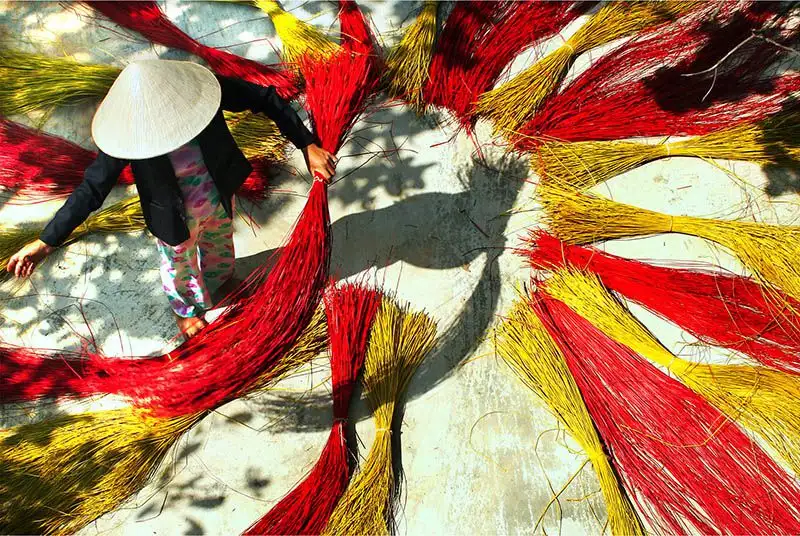Cam Ne Mat Village – Discover Da Nang’s ancient mat-weaving tradition
Tucked away in the peaceful outskirts of Da Nang, Cam Ne Mat Village is one of Vietnam’s few remaining traditional mat-weaving villages. For centuries, this quiet community has been known for producing high-quality sedge mats once used by royal families in Hue. Today, Cam Ne continues to preserve its age-old techniques, offering visitors an authentic look into the artistry and rhythm of local craft life. Walking through the village, you’ll hear the rhythmic clatter of wooden looms and see colorful bundles of dried sedge lying in the sun – a vivid reflection of Central Vietnam’s cultural heritage.
Introduction to Cam Ne Mat Village
Cam Ne Mat Village is located in Hoa Tien Commune, Hoa Vang District, about 14 km southwest of the center of Da Nang city. It is one of the most famous traditional craft villages in Central Vietnam, specializing in handmade mats made from reed, a natural, eco-friendly material that is cool in summer and warm in winter.
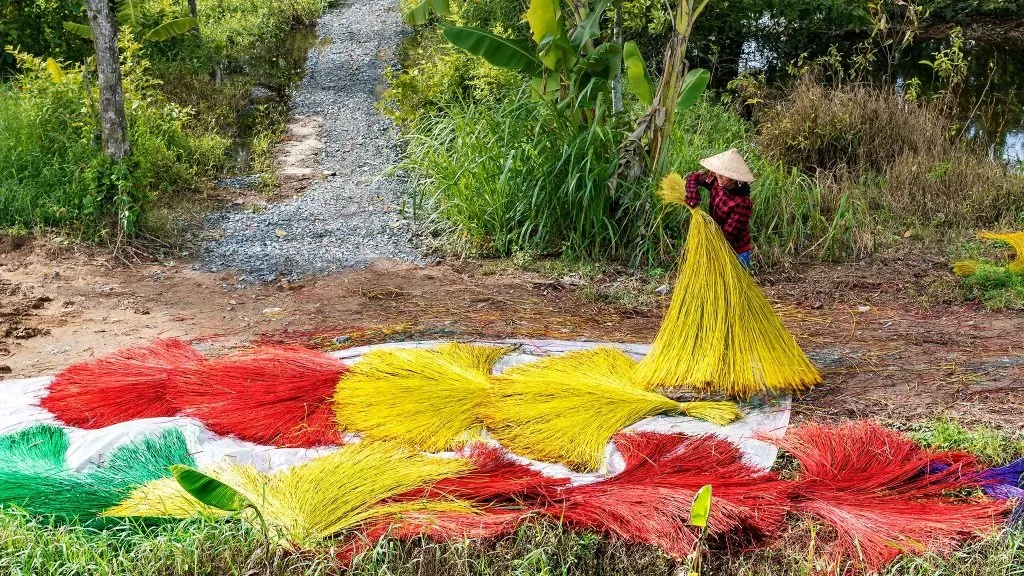
The history of Cam Ne Mat Village is closely associated with mat weaving, a craft that dates back hundreds of years. The tradition originated in Thanh Hoa Province and was brought to Central Vietnam during the Le Dynasty migration. Cam Ne mats were once highly valued by the Nguyen Dynasty, even receiving royal recognition for their exquisite quality, meeting the standards of use in the royal court.
The hallmark of Cam Ne mats lies in the skillful combination of traditional craftsmanship and artistry, creating durable, beautifully patterned products. More than just everyday items, these mats represent a unique cultural heritage, showcasing the dexterity and creativity of the villagers.
Visiting guide to Cam Ne Mat Village
Planning your trip to Cam Ne Mat Village is easier than you think. Whether you’re staying in Da Nang or coming from Hoi An, this peaceful craft village is just a short ride away. Below is a quick guide to help you make the most of your visit — from how to get there, when to go, to what you should know before stepping into this charming traditional community.
How to get there?
Cam Ne Mat Village is located about 14 kilometers southwest of Da Nang city center, in Hoa Tien Commune, Hoa Vang District. From Da Nang, you can reach the village in about 20 minutes by motorbike, private car, or taxi. Simply follow National Highway 1A, cross Cam Le Bridge, then continue straight until you see the sign for Cam Ne Village. The road is smooth and lined with peaceful rice fields and small local houses, giving you a glimpse of Da Nang’s tranquil countryside.
If you’re starting from Hoi An, the journey takes around 50-60 minutes by car. The most convenient route is to follow Vo Chi Cong Road toward Da Nang, then connect to National Highway 1A heading southwest to Hoa Tien Commune. It’s an easy and scenic drive that lets you experience the natural charm of Central Vietnam along the way.
Understanding that many travelers want to explore beyond the ancient town, Bliss Hoi An Beach Resort & Wellness now offers a private transportation service directly from the resort to Cam Ne Mat Village. This door-to-door ride provides a comfortable and hassle-free way to enjoy your cultural day trip, just relax and let our driver take you straight to one of Da Nang’s most authentic craft villages.
Opening Hours
The village is open daily, and visitors can come at any time. However, the best hours to visit are between 8:00 AM and 4:00 PM, when local artisans are actively weaving mats, allowing you to watch or even join in the process.
Entrance fee
There is no official entrance fee to visit Cam Ne Mat Village. Guests are welcome to explore freely, but small purchases or voluntary donations are appreciated as a way to support local craftsmen and help preserve the traditional mat-weaving craft.
Best time to visit
The best time to visit Cam Ne Mat Village is from November to January, when the village is at its most vibrant. This is the period when local farmers harvest reeds, the main material for mat weaving, and the entire community comes alive with the sound of looms and the sight of colorful threads drying in the sun. The weather during these months is mild and pleasant, making it ideal for exploring rural areas around Da Nang.
If you visit during the dry season (February to August), you’ll enjoy sunny days and clear skies, perfect for photography and combining your trip with other nearby attractions such as Ba Na Hills or Marble Mountains. However, weaving activity may be less busy than during the harvest months.
Travelers should avoid visiting during Tet (Lunar New Year), usually from late January to mid-February, as most families take a break from production to celebrate the holiday. During this time, workshops are closed, and the village atmosphere is much quieter.
Things to do in Cam Ne Mat Village
A visit to Cam Ne Mat Village offers a close look at one of Vietnam’s oldest traditional crafts that still survives today. Just a short drive from Da Nang or Hoi An, this peaceful village opens a window into local life that has hardly changed for generations.
Watch the mat-weaving process step by step
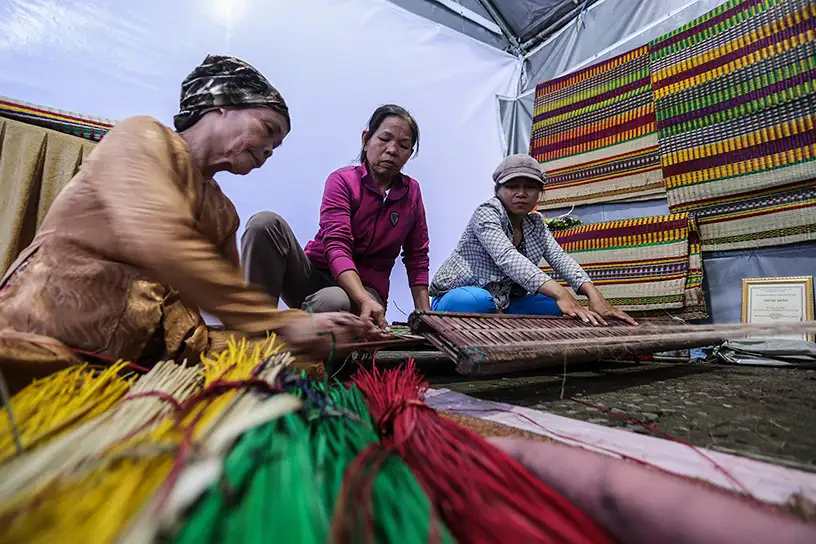
The highlight of any visit is watching the artisans at work. Inside each family home, you’ll find wooden looms stretching across the living room, with women rhythmically weaving threads of dried sedge into colorful mats. You can see how they dye the sedge in bright reds, greens, and yellows before drying them under the sun, then arrange each strand carefully by hand. The sound of the loom and the quick, precise movement of the weavers’ hands make the whole process feel alive.
Join a hands-on weaving activity
Visitors are often invited to try weaving their own small mat section. Under the patient instruction of the craftswomen, you’ll learn how to hold the reed properly, align the patterns, and use the shuttle to tighten each row. It might take a few tries, but locals are always ready to guide and laugh along with you. The finished piece, however imperfect, becomes a meaningful memento of your time in the village.
Explore the village and meet local families
Cam Ne’s charm lies not only in its craft but also in its people. Walking through the narrow, quiet paths, you’ll see homes where weaving looms stand next to bicycles and rice baskets, showing how deeply this craft is woven into daily life. Many elders are proud to share stories of how their ancestors wove mats for the royal court of Hue centuries ago. Their hospitality makes the visit feel warm and personal, like stepping into someone’s home rather than a tourist attraction.
Visit family-run workshops and shop for handmade mats
Many families still run small workshops that you can enter freely. Here, you can see the full production process, from drying the sedge to weaving and finishing. Each mat is unique, and prices are very reasonable. The mats are lightweight and easy to pack, making them ideal souvenirs. Some households even offer to weave your name or favorite color pattern into a custom mat if you request in advance.
Other traditional craft villages in Da Nang and Hoi An
For travelers who love exploring Vietnam’s traditional culture, Cam Ne Mat Village is just one of many hidden gems. Both Da Nang and Hoi An are home to long-standing craft villages where heritage and craftsmanship are still alive today. Each offers a hands-on experience and a glimpse into the daily life of Central Vietnam’s artisans.
Non Nuoc Stone Carving Village
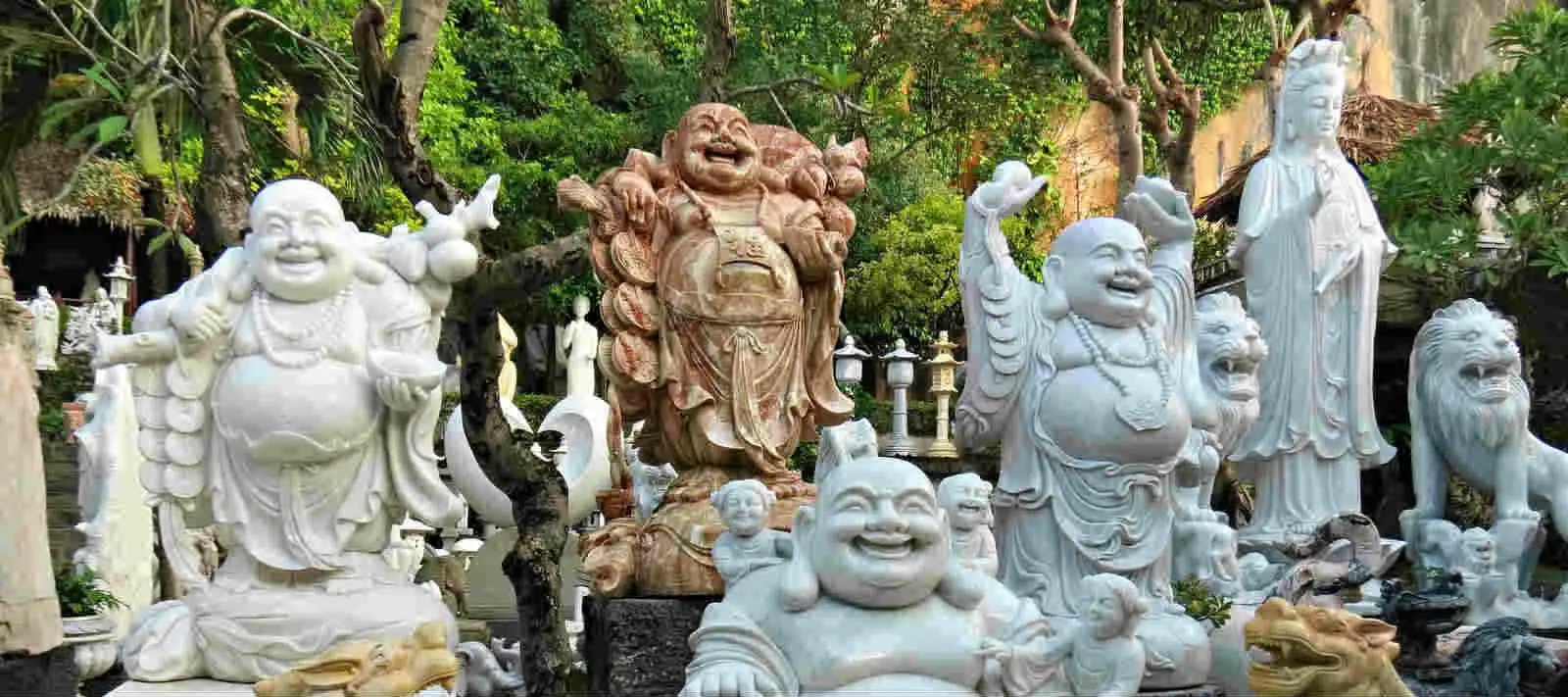
Located at the foot of the Marble Mountains, Non Nuoc is one of Da Nang’s oldest and most famous craft villages. For more than 400 years, local artisans have transformed solid blocks of marble into delicate statues, religious sculptures, and fine household decorations.
Visitors can stroll through the narrow village streets lined with workshops where the sound of chisels and hammers echoes all day. You can watch craftsmen shaping each detail by hand, feel the cool touch of the stone, and even purchase beautiful souvenirs like bracelets, vases, or small Buddha figures. Many shops also offer international shipping for larger pieces – a sign of how the village has adapted to modern tourism while keeping its craft alive.
Nam O Fish Sauce Village
Just northwest of Da Nang city center, Nam O Village has been producing its signature anchovy fish sauce for more than a century. Here, the salty scent of the sea mixes with the earthy aroma of wooden barrels used for fermentation.
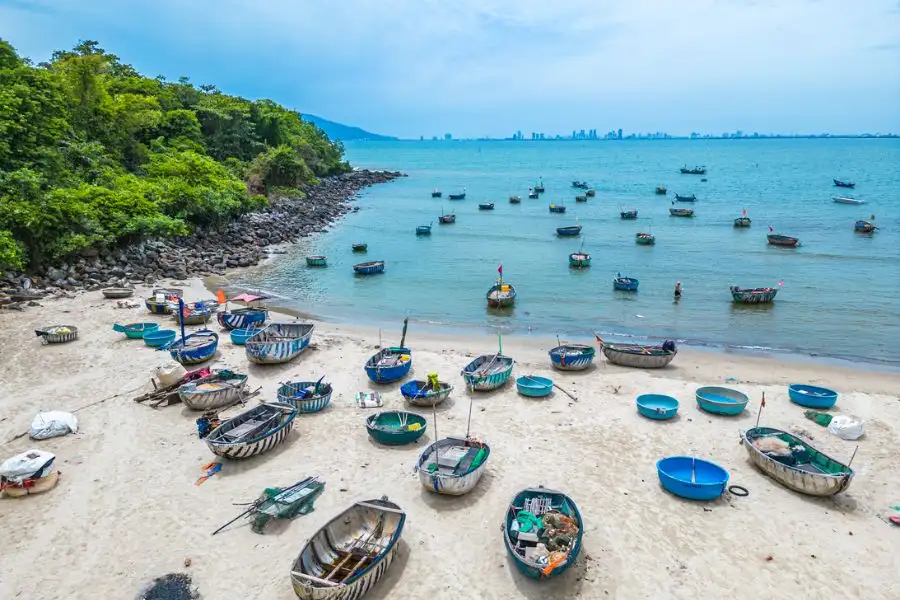
Visitors can join a short tour to see how the fish are cleaned, salted, and aged naturally over months. The villagers take pride in using only fresh anchovies caught from the nearby sea, resulting in a thick, amber-colored sauce with a strong yet balanced flavor. You can taste the difference directly and even bring home a bottle as a unique local specialty.
Thanh Ha Pottery Village
Located just 3 kilometers west of Hoi An Ancient Town, Thanh Ha Pottery Village has been making clay pottery since the 16th century. The village once supplied tiles and decorative ceramics for temples and old houses throughout Hoi An.
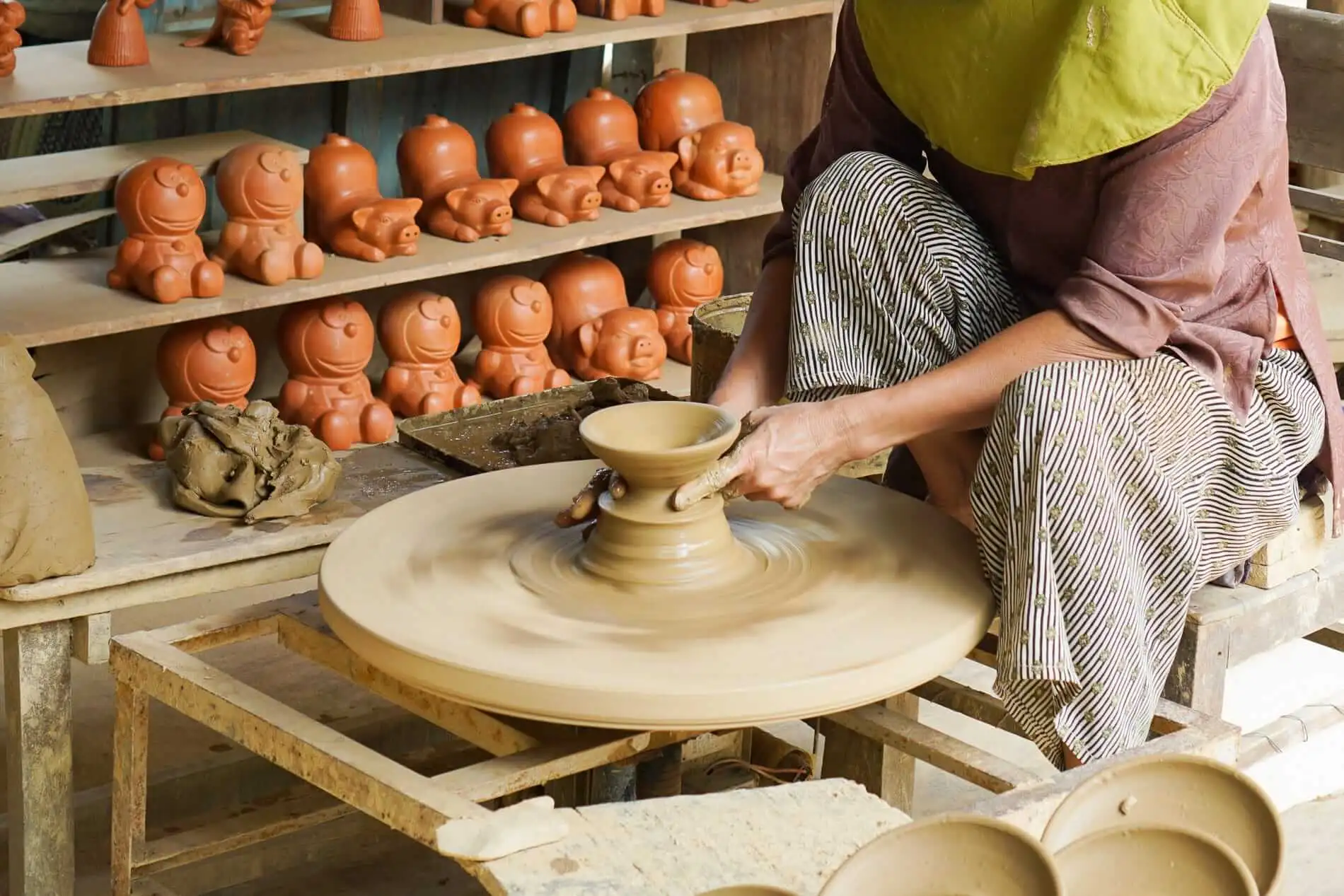
Today, visitors can walk along the riverside lanes to see artisans shaping clay on spinning wheels. You can try making your own pot under the guidance of a local craftsman, a fun and memorable hands-on activity. Don’t miss the Thanh Ha Terracotta Park, an open-air museum displaying clay models of famous landmarks like the Eiffel Tower and the Taj Mahal, all made entirely of terracotta.
Tra Que Vegetable Village
Tra Que Village lies between Hoi An Ancient Town and An Bang Beach, known for its lush gardens and fragrant herbs. The village’s fertile soil, enriched by a special kind of seaweed from the Co Co River, produces some of the freshest vegetables in Central Vietnam.
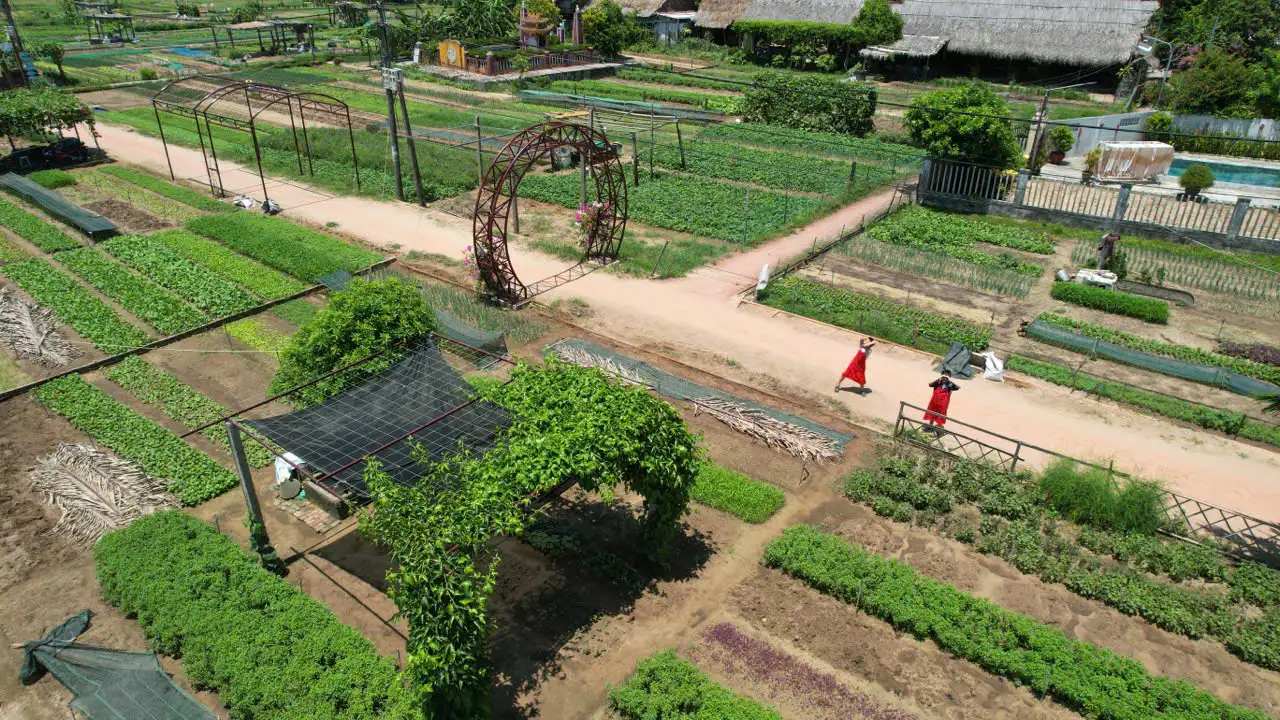
Visitors can join the farmers in daily activities such as sowing seeds, watering crops, or picking herbs. Afterward, you can enjoy a cooking class using freshly harvested ingredients, preparing dishes like tam huu (shrimp and pork spring rolls) or crispy pancakes. It’s an ideal stop for travelers who want to combine relaxation with a bit of outdoor fun.
If you’re staying at Bliss Hoi An Beach Resort & Wellness, the resort offers several curated sightseeing tours that make the most of your time in Tra Que Village. Guests can join a scenic cycling trip through the countryside, or choose a more adventurous ATV ride along hidden village paths surrounded by rice fields. Afterward, you can unwind with a hands-on cooking class, learning to prepare simple yet delicious local dishes using herbs you’ve picked yourself. It’s the perfect blend of adventure, culture, and relaxation, designed for those who want to truly live the Hoi An experience.
Read more: Tra Que Vegetable village Hoi An: An ultimate travel guide
Kim Bong Carpentry Village
Across the Thu Bon River from Hoi An, Kim Bong Carpentry Village has been known since the 15th century for its woodworking and shipbuilding traditions. Many of Hoi An’s historic houses were built with wood from Kim Bong, carved with intricate patterns and refined by generations of artisans.
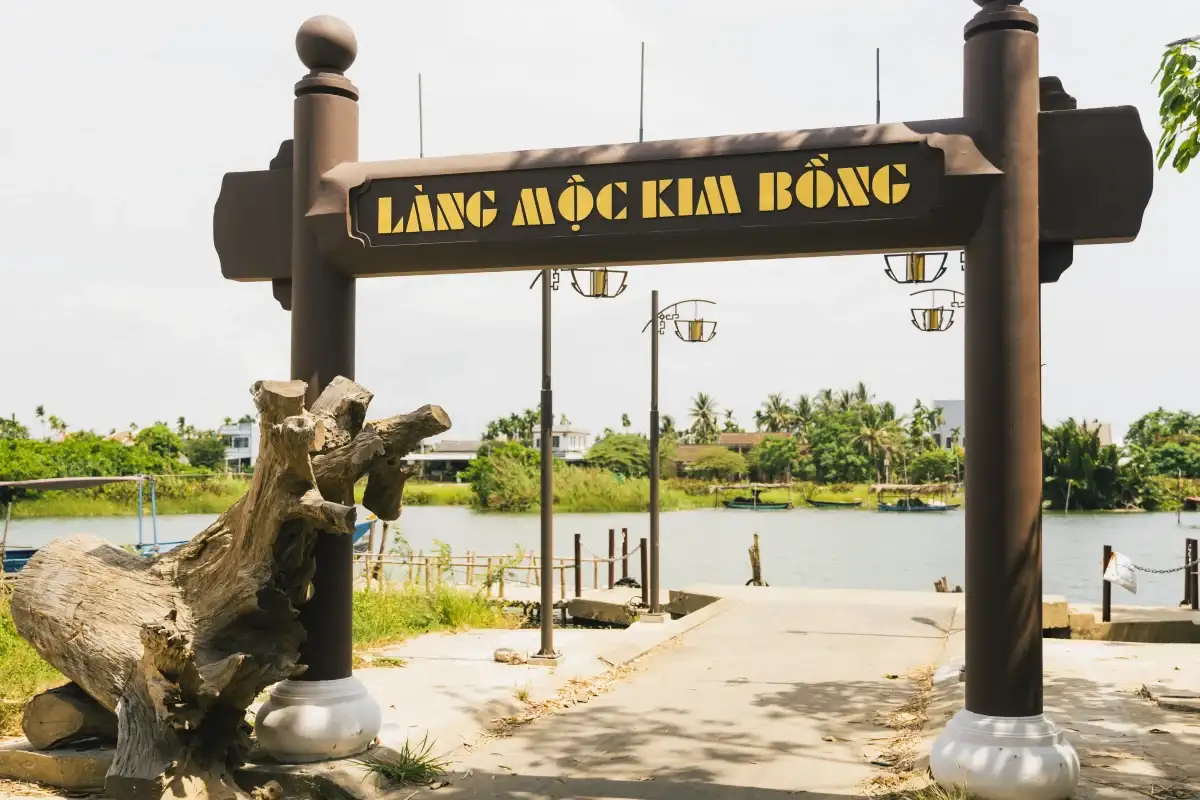
Visitors can observe carpenters working with traditional tools, crafting everything from furniture and souvenirs to large wooden boats. You can also stroll through the riverside area, where the scent of freshly cut wood fills the air and the rhythm of hammers and saws reflects the steady pace of rural life.
Read more: Kim Bong carpentry village: “Museum” of Vietnamese Woodcraft
A trip to Cam Ne Mat Village is more than just a cultural stop, it’s a journey into the heart of traditional Vietnamese craftsmanship. Watching the artisans at work, trying your hand at weaving, and meeting the warm-hearted villagers all reveal how deeply the art of mat-making is woven into daily life here. While modernity has touched many corners of Da Nang, Cam Ne remains a living reminder of patience, skill, and quiet beauty that continues to thrive through generations.

